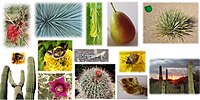Aerobic organism

1: strict aerobics They need oxygen because they can't ferment or breathe anaerobically. They meet at the top of the tube, where the oxygen concentration is greater.
2: strict anaerobics They are poisoned by oxygen, so they meet at the bottom of the tube, where the oxygen concentration is lower.
3: anaerobics they can grow with or without oxygen because they can metabolize energy in aerobic or anaerobic way. They gather mainly at the top because aerobic breathing generates more ATP than fermentation or anaerobic breathing.
4: microaerophiles They need oxygen because they can't ferment or breathe anaerobically. However, they are poisoned with high concentrations of oxygen. They meet at the top of the test tube but not across the top.
5: Agencies aerotolerants they don't need oxygen because they metabolize the energy anaerobically. However, unlike forced anaerobics, they are not intoxicated with oxygen. They are evenly distributed throughout the test tube.
Organisms that can live or develop in the presence of diatomic oxygen are called aerobic or aerobic organisms. The concept applies not only to organisms but also to processes involved ("aerobic metabolism") and the environments where they are carried out. An "aerobic environment" It is one that is rich in oxygen, unlike the anaerobic one, where oxygen is absent, or a microaerophilic one, where oxygen is found at very low levels.
Aerobic metabolism (respiration) arose in evolution after oxygenic photosynthesis, the most common form of photosynthesis, released oxygen into the atmosphere, which had been in short supply until then. Initially it represented a way to counter the toxicity of oxygen, rather than a way to take advantage of it. Since the oxidation of glucose and other substances releases much more energy than their anaerobic utilization, eg fermentation, aerobic beings soon became the dominant organisms on Earth.
The common ancestor of eukaryotic organisms (with nucleated cells) acquired the ability to perform aerobic metabolism by integrating an aerobic bacterium as a permanent organelle, the mitochondria (endosymbiosis theory).
Aerobiosis is a process of cellular respiration, in which oxygen is used for the oxidation of the substrate (for example, sugars and fats, to obtain energy).
Types
- Strict air They need oxygen to grow. In a process called cell breathing, these organisms use oxygen to oxidize some substrates (carbohydrates and fats) to generate energy.
- Optional Anaerobic use oxygen if it is available, but they also have anaerobic methods for energy production.
- Microaerophile They require oxygen for energy production but are damaged in case of very high concentrations (e.g. atmospheric level).
- Aerotolerante They don't use oxygen, but they don't hurt either.
Example
A good example is the oxidation of glucose (a monosaccharide) in aerobic respiration.- C6H12O6 + 38 ADP + 38 Pi + 6 O2 - negative 6 CO2 + 6 H2O + 38 ATP
Giving about 2,880 kJmol-1.
Oxygen is used during the oxidation of glucose and water, CO2 and energy are produced.
Contenido relacionado
Annamocarya sinensis
Arthoniaceae
Araceae
